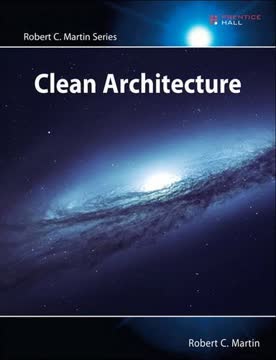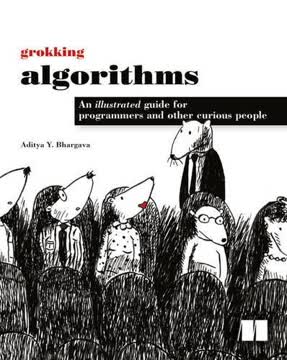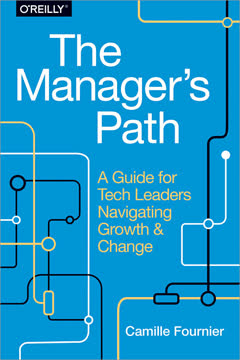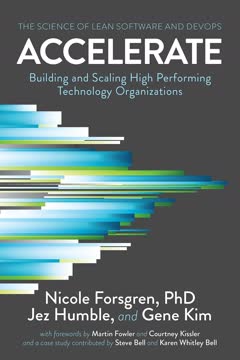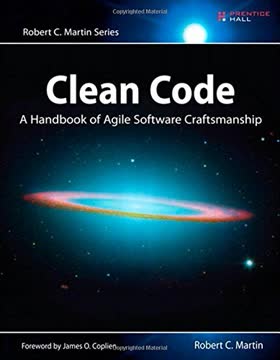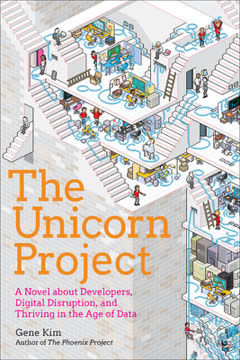つの重要なポイント
1. 脳をマスターする:LモードとRモード思考を理解する
Rモードは日常の仕事において非常に重要です。長期記憶や「進行中」のアイデアを検索し、取り出すエンジンとして機能します。
脳のデュアルCPUモデル。 脳は2つの異なる処理モードで動作します:Lモード(線形、論理的、言語ベース)とRモード(豊かで全体的、直感的)。Lモードは段階的な処理と口頭でのコミュニケーションを担当し、Rモードはパターン認識、創造性、全体的な思考に優れています。
両方のモードを活用する。 認知能力を最大限に引き出すためには、両方のモードを活用し、その協力を促進することが重要です。Rモード思考を強化するための技術には以下が含まれます:
- 感覚入力を増やす(例:問題解決中に触覚オブジェクトを使用する)
- 描画や視覚的思考の練習
- 瞑想やマインドフルネスの実践
- メタファーやアナロジーの作成
両方のモードを理解し、意識的に活用することで、問題解決能力、創造性、全体的な認知パフォーマンスを劇的に向上させることができます。
2. ドレイファスモデルを受け入れる:初心者から専門家への旅
専門家はあらゆる分野で知識と情報の主要な源です。彼らは常により良い方法やより良い手段を探求しています。
スキル習得の5段階。 ドレイファスモデルは初心者から専門家への進行を以下のように示しています:
- 初心者:文脈に依存しないルールに頼り、明確な指示を必要とする
- 上級初心者:状況の側面を認識し始める
- 有能者:概念モデルを開発し、トラブルシューティングができる
- 熟練者:状況を全体的に見て自己修正ができる
- 専門家:直感と暗黙の知識に頼る
学習と教育への影響。 これらの段階を理解することで:
- 現在のスキルレベルに合わせた学習アプローチを調整する
- 他者の段階に基づいて適切な指導を提供する
- ルールベースの思考と直感的な思考の両方の重要性を認識する
さまざまなスキルにおける現在の段階を特定することで、学習の旅をより効果的に計画し、経験に基づく直感の価値を理解しながら専門知識に向かって進むことができます。
3. 直感を活用する:専門家レベルのパフォーマンスの鍵
専門家は理性ではなく直感から働きます。
直感の育成。 直感は神秘的なものではなく、豊富な経験とパターン認識の結果です。これを発展させるためには:
- 自分の分野で多様な経験を積む
- 過去の決定と結果について意図的に反省する
- さまざまなシナリオの「メンタルシミュレーション」を行う
直感と分析のバランス。 直感は専門家のパフォーマンスに不可欠ですが、重要なのは:
- 直感的な洞察を分析的思考で検証する
- 直感が偏っているか信頼できない状況を認識する
- 直感を深い調査の出発点として使用する
直感を意識的に発展させ、適切に適用することで、より迅速で効果的な意思決定を行い、専門分野でのパフォーマンスを向上させることができます。
4. 心のバグをデバッグする:認知バイアスを認識し克服する
これらのバグを認識することが、それを軽減するための第一歩です。
一般的な認知バイアス。 私たちの思考はさまざまな体系的なエラーに陥りやすいです。例えば:
- 確証バイアス:既存の信念を確認する情報を求める
- アンカリング:最初に出会った情報に過度に依存する
- 利用可能性ヒューリスティック:簡単に思い出せる出来事の可能性を過大評価する
軽減のための戦略。 これらのバイアスと戦うためには:
- 自分の信念に反する証拠を積極的に探す
- 決定を下す前に複数の視点を考慮する
- バイアスの影響を減らすために構造化された意思決定プロセスを使用する
- 自分の仮定を定期的に反省し、挑戦する
これらの思考の「バグ」を認識し、積極的に克服することで、より合理的な意思決定を行い、あらゆる分野での問題解決能力を向上させることができます。
5. 意図的に学ぶ:SMART目標を設定し、知識ポートフォリオを管理する
レシピ26 学習への投資を意図的に計画する。
学習のためのSMART目標。 目標を次のように設定します:
- 具体的:明確に定義され、曖昧でない
- 測定可能:進捗と最終結果が定量化できる
- 達成可能:現実的で達成可能
- 関連性:キャリアや個人的な目標と一致している
- 時間制限:明確な期限や時間枠がある
知識ポートフォリオ管理。 スキルと知識を金融ポートフォリオのように扱います:
- 多様化:補完的なスキルのミックスを学ぶ
- 定期的に投資:断続的な詰め込みよりも一貫した学習が効果的
- 見直しと再バランス:定期的にスキルセットを評価し調整する
- リスクとリターンを考慮:安全で確立されたスキルと潜在的に高リターンの新興技術のバランスを取る
この意図的で構造化された方法で学習に取り組むことで、継続的な成長を確保し、急速に変化するプロフェッショナルな環境での関連性を維持することができます。
6. 効果的に経験を積む:遊び、失敗し、神経経路を形成する
レシピ35 探索し、発明し、自分の環境で応用する—安全に。
遊びを通じた学習。 遊び心を持ち、探索的なアプローチで学習に取り組みます:
- 失敗を恐れずに実験する
- 「ハードファン」—挑戦的だが魅力的な活動に従事する
- ゲーム、シミュレーション、ロールプレイングを使用して概念を探求する
生産的な失敗。 失敗のための安全な環境を作る:
- リスクのない実験のためのサンドボックスを設定する
- 失敗を分析し、洞察と学習の機会を見つける
- 失敗を成長のステップと見なす成長マインドセットを育む
メンタルプラクティスと視覚化。 脳が鮮明な想像と実際の経験を区別できないことを活用する:
- 挑戦的なタスクに備えるためにメンタルリハーサルを行う
- 成功した結果を視覚化して脳を成功に向けて準備する
- パフォーマンス不安を減らすための「インナーゲーム」技術を練習する
これらのアプローチを組み合わせることで、スキル習得を加速し、自信を築き、専門家レベルのパフォーマンスに必要な神経経路を発展させることができます。
7. 集中力を管理する:注意力を高め、現在の状況を最適化する
レシピ39 注意を払うことを学ぶ。
集中力の育成。 常に気を散らすものがある時代において、意図的に集中力を管理することが重要です:
- マインドフルネス瞑想を実践して集中力を向上させる
- ポモドーロ法などの時間管理技術を使用する
- 深い作業のための気を散らさない環境を作る
コンテキスト管理。 コンテキストスイッチングの認知コストを最小化する:
- 類似したタスクをまとめて処理する
- アイデアを迅速にキャプチャし整理するためのツールと技術を使用する
- 異なる作業モードに入るための儀式を開発する
意図的な練習。 学習と作業セッションを最適化する:
- 各練習セッションのために明確で具体的な目標を設定する
- 自分のパフォーマンスに対する即時のフィードバックを求める
- 現在の能力を少し超えたところに挑戦する
集中力とコンテキスト管理の技術をマスターすることで、プロフェッショナルおよび個人的な追求において生産性、学習効率、全体的な認知パフォーマンスを劇的に向上させることができます。
最終更新日:
FAQ
What's Pragmatic Thinking and Learning about?
- Cognitive Science Focus: The book delves into cognitive science, neuroscience, and learning theories to improve thinking and learning skills.
- Refactoring Wetware: It humorously refers to the brain as "wetware," suggesting that mental processes can be optimized like software.
- Broad Audience: While targeted at programmers, its insights are applicable to anyone seeking to enhance problem-solving and learning abilities.
Why should I read Pragmatic Thinking and Learning?
- Enhance Learning Skills: Offers practical techniques to improve learning and adaptability to new challenges.
- Real-World Applications: Emphasizes the importance of context in learning, crucial for success in any field.
- Expert Insights: Authored by Andy Hunt, it draws on extensive research and personal experience for valuable advice.
What are the key takeaways of Pragmatic Thinking and Learning?
- Active Learning: Learning should be an active process, engaging with material through exploration and practice.
- Embrace Mistakes: Mistakes are valuable learning opportunities, essential for growth and improvement.
- Diversity in Learning: Embracing diverse perspectives enhances creativity and problem-solving abilities.
What is the Dreyfus Model of Skill Acquisition in Pragmatic Thinking and Learning?
- Five Stages: The model outlines stages from novice to expert, each representing different skill levels.
- Contextual Learning: Progressing through stages involves applying knowledge in context, crucial for expertise.
- Practical Application: Helps individuals recognize their current skill level and what they need to advance.
How does Pragmatic Thinking and Learning define "wetware"?
- Brain Analogy: "Wetware" humorously refers to the human brain and its cognitive processes.
- Refactoring Mental Processes: Suggests that thinking and learning processes can be improved through practice.
- Focus on Improvement: Encourages active work on mental processes to enhance problem-solving and learning.
What are some techniques for enhancing learning mentioned in Pragmatic Thinking and Learning?
- Mind Mapping: Visualizes relationships between concepts, aiding understanding and memory.
- SQ3R Method: A reading strategy promoting active engagement for better retention.
- Deliberate Practice: Focused, intentional practice is emphasized for skill development.
How can I manage focus and attention according to Pragmatic Thinking and Learning?
- Increase Focus: Techniques like setting goals and minimizing distractions enhance concentration.
- Defocus to Focus: Allowing the mind to wander can lead to creative insights and solutions.
- Manage Interruptions: Creating a conducive environment for work improves focus significantly.
What cognitive biases should I be aware of according to Pragmatic Thinking and Learning?
- Anchoring Bias: Initial information unduly influences subsequent judgments and decisions.
- Confirmation Bias: Tendency to seek information that confirms preconceptions, leading to flawed decisions.
- Self-Serving Bias: Attributing successes to oneself and failures to external factors distorts self-assessment.
How does Pragmatic Thinking and Learning suggest I harvest insights from my R-mode?
- Image Streaming: Verbalizing mental images taps into the subconscious for insights.
- Free-Form Journaling: Writing without censorship clarifies thoughts and surfaces hidden ideas.
- Walking and Reflection: Physical activity like walking frees the mind to explore ideas.
What are some effective ways to integrate L-mode and R-mode thinking in Pragmatic Thinking and Learning?
- R-mode to L-mode Flow: Start with R-mode activities for idea generation, then transition to L-mode for analysis.
- Pair Programming: Collaborating integrates different cognitive styles, enhancing problem-solving.
- Use of Metaphors: Metaphors bridge abstract concepts and concrete understanding, facilitating insight.
How does Pragmatic Thinking and Learning address the concept of failure?
- Failure as Learning: Frames failure as essential for learning, providing valuable feedback.
- Safe Environment: Emphasizes creating an environment where failure is accepted as a learning opportunity.
- Resilience Building: Coping with failure builds resilience and adaptability, encouraging experimentation.
How can I apply the concepts from Pragmatic Thinking and Learning in my daily life?
- Implement Learning Techniques: Use mind maps and SMART goals for organizing thoughts and tracking progress.
- Practice Mindfulness: Incorporate meditation to enhance focus and reduce stress.
- Embrace Mistakes: View failure as a learning opportunity, reflecting on mistakes for future improvement.
レビュー
『Pragmatic Thinking and Learning』は、認知スキルと学習技術の向上に関する実践的なアドバイスで高く評価されている。読者は、認知科学、心理学、プログラミングの概念を融合させた内容を称賛している。多くの人々が、この本を脳の機能、集中力の管理、スキルの習得に関する貴重な洞察を提供する変革的なものと見なしている。ドレイファスモデルや意図的な学習に関するヒントが頻繁に取り上げられている。一部の人々は、その簡素なスタイルや古い参考文献を批判するが、ほとんどのレビューアーは、プログラマーや知識労働者が精神的能力と問題解決スキルを向上させるためにこの本を推奨している。
Similar Books

